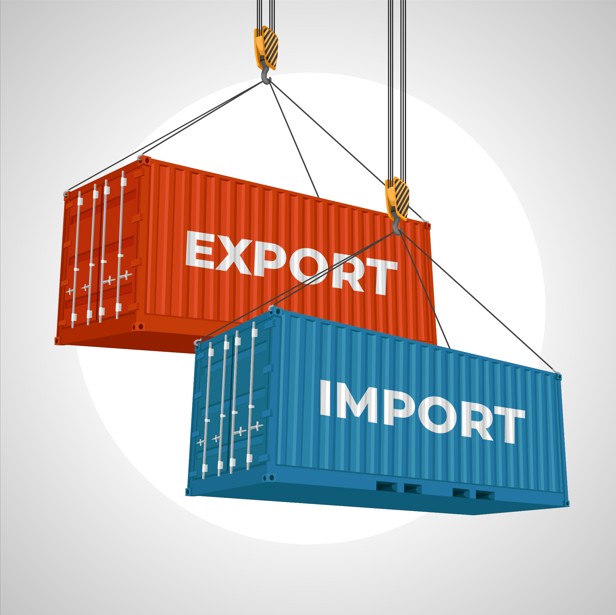By Naima Sultana
The recent reduction of the United States’ reciprocal tariff on Bangladeshi exports from 35 percent to 20 percent marks a welcome development for the country’s trade prospects, especially within the garments sector.
The previously looming threat of a 35 percent duty on key Bangladeshi exports to the US had raised serious concerns across industries, particularly within the readymade garments (RMG) sector. That threat has now been averted.

This adjustment in tariff policy represents a pivotal moment for Bangladesh’s apparel industry and opens one of the most promising windows of opportunity in recent years.
Initially, the proposed 35 percent duty was deeply alarming, posing a direct threat to Bangladesh’s competitiveness in its most crucial export market. Thanks to the government’s active diplomatic engagement and strategic negotiations, the rate was successfully lowered.
The private sector, particularly exporters, also played an instrumental role in lobbying the US administration, facilitating this much-needed tariff revision.
While a 20 percent tariff remains significant, it restores a degree of parity on the global trade stage. This revision is part of a broader recalibration of the United States’ reciprocal tariff structure, which now applies similarly to several of its trading partners.
Under the new policy, Bangladesh will face the same 20 percent tariff levied on exports from Vietnam and Sri Lanka. India’s tariff rate stands at 25 percent, while Pakistan benefits from a slightly lower rate of 19 percent. In this context, Bangladesh’s adjusted tariff brings it more in line with its key regional competitors in the US market, reducing the risk of trade diversion and minimising potential disruption to RMG exports. Crucially, it helps preserve the country’s competitive edge.
China’s role in global manufacturing remains a central consideration. Given the substantial overlap between Chinese and Bangladeshi export categories, future changes to China’s tariff rate will be pivotal in shaping global trade patterns.
Currently, Chinese apparel faces a steep 55 percent tariff, and negotiations remain ongoing. This disparity presents a potential opportunity for Bangladesh, especially if US buyers continue shifting orders away from China in search of more cost-effective alternatives.
At present, Bangladesh is the third-largest garment exporter to the United States, following China and Vietnam, with a 9.3 percent share of the American apparel import market, which is valued at approximately $80 billion.
The situation in Vietnam also offers indirect advantages to Bangladesh. The US has imposed a 40 percent duty on garments suspected of being transshipped through Vietnam to avoid Chinese tariffs. Given that Vietnam’s garment industry relies heavily on Chinese raw materials, investments, and supply chains, its ability to maintain competitiveness under these new constraints may be compromised again, to Bangladesh’s potential benefit.
Moreover, a new US policy to support domestic cotton farmers is reshaping sourcing incentives. American retailers are now eligible for duty waivers if they incorporate at least 20 percent US cotton in their garment sourcing. This allows buyers to enjoy zero tariffs on part of the FOB (Free on Board) value, an incentive that could position Bangladesh as a preferred destination for duty-advantaged, high-quality garment production, provided it aligns itself with such programmes. This could be a genuine game-changer.
Yet, to transform this relief into long-term gains, Bangladesh must act with urgency and foresight. This requires enhancing value addition, reinforcing compliance and sustainability standards, negotiating improved trade facilitation measures, and strengthening strategic partnerships particularly with the United States.
Bangladesh’s apparel sector is no stranger to adversity. It is a mature industry, backed by decades of experience, an extensive industrial base, and growing expertise in value-added manufacturing. Where countries like China and Vietnam once held dominance in niche markets such as performance wear, sportswear, and technical outerwear; Bangladesh now has an opportunity to step up and fill that void.
To truly capitalise on this opportunity, however, the country must improve its business climate. This includes attracting greater levels of investment, ensuring a reliable gas supply to industrial zones, and streamlining logistical processes especially port operations, which have long posed operational challenges to exporters.
Although the reduction in tariff rates offers immediate relief, it also raises legitimate questions about what concessions Bangladesh may have extended to the United States in return. Some public commitments have already been made, including agreements to import American goods such as wheat, cotton, and aircraft.
However, it is not unreasonable to suspect that more sensitive obligations may exist under confidentiality clauses or non-disclosure agreements, which could remain undisclosed for the foreseeable future. This reality underscores the need for greater transparency, oversight, and strategic planning in Bangladesh’s trade diplomacy.
This episode offers several critical lessons. Most importantly, it highlights the urgency of building resilience into Bangladesh’s external trade architecture. Three strategic imperatives emerge:
First, the country must accelerate efforts to diversify its export basket and broaden its market base beyond traditional destinations. Overdependence on a narrow set of products and partners particularly the United States exposes the economy to significant risk.
Second, domestic reforms in trade policy, taxation, and investment are essential to enhance competitiveness and attract long-term foreign direct investment. A more robust regulatory and business environment will help establish Bangladesh as a stable, reliable trade partner.
Third, targeted free trade agreements with emerging economies across Asia, Latin America, and Africa should be explored. These pacts can act as buffers against future protectionist shocks while offering new avenues for export growth.
Bangladesh now stands at a critical juncture. The tariff revision is not merely a reprieve; it is a strategic opportunity. But to seize it fully, both government and industry must address persistent bottlenecks, ranging from port inefficiencies to energy shortages, while preparing the sector to compete in an evolving global market.
The question now is not whether the opportunity exists, but whether Bangladesh is truly ready to grasp it.

